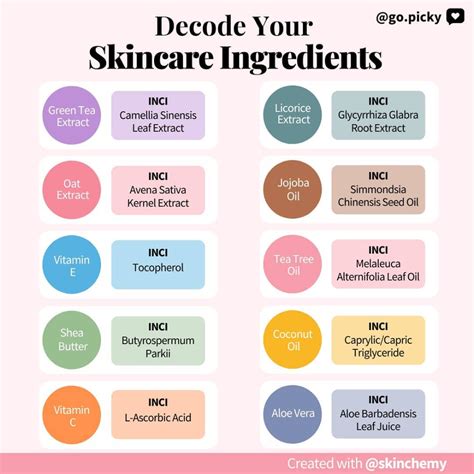
Navigating the complex world of skincare can be daunting, especially with the overwhelming array of products and conflicting advice. Experts are offering a simplified guide to help individuals understand which products to use and in what order, streamlining beauty routines and maximizing results, particularly for those feeling lost in the ever-evolving skincare landscape.
For many, particularly those over 50, the beauty aisle can feel like a foreign land. Faced with a multitude of serums, creams, and lotions, it’s easy to feel confused about what products are truly necessary and how to use them effectively. This confusion isn’t just about choosing the right products; it extends to understanding the correct order of application to ensure each product performs as intended. Dermatologists and skincare professionals emphasize that a simplified, strategic approach can cut through the noise and deliver noticeable improvements.
One of the most common questions is, “What products do I really need?” The answer, according to experts, isn’t a cabinet full of expensive items. Instead, focus on a core routine that addresses individual skin concerns. This typically includes a gentle cleanser, a targeted serum (such as one containing antioxidants or retinol), a moisturizer, and, most importantly, sunscreen. “Sunscreen is the most important anti-aging product you can use,” stresses dermatologists, highlighting its critical role in preventing premature aging and protecting against skin cancer.
The order of application is equally crucial. The general rule of thumb is to apply products from thinnest to thickest consistency. This allows each product to properly absorb into the skin without being blocked by heavier creams. A typical routine would start with cleansing, followed by a toner (if using), then serums, moisturizers, and finally, sunscreen during the day. Nighttime routines may incorporate retinol or other treatment products after cleansing.
Skincare professionals also advocate for a minimalist approach, especially for those with sensitive skin. Overloading the skin with too many active ingredients can lead to irritation, redness, and breakouts. A simplified routine allows the skin to breathe and function optimally. It also makes it easier to identify which products are working and which might be causing adverse reactions.
The key to a successful skincare routine is consistency and patience. Visible results often take time, and it’s important to give products a fair chance to work before switching to something new. Dermatologists recommend using a product consistently for at least a few weeks before evaluating its effectiveness. Tracking changes in the skin, either through journaling or photographs, can also help in assessing progress.
Furthermore, understanding your skin type is crucial in choosing the right products. What works for oily skin might not work for dry skin, and vice versa. Consulting with a dermatologist or skincare professional can provide personalized recommendations based on individual skin needs and concerns. They can also help address specific issues like acne, hyperpigmentation, or rosacea with targeted treatments and products.
The overwhelming nature of the beauty industry often leads to impulsive purchases and the accumulation of products that ultimately go unused. By focusing on a simplified routine and understanding the fundamentals of skincare, individuals can create a personalized regimen that delivers effective results without breaking the bank or overwhelming their skin.
Ultimately, skincare is a personal journey, and what works for one person might not work for another. However, by following these simplified guidelines and seeking professional advice when needed, individuals can confidently navigate the world of beauty products and achieve healthy, radiant skin.
In-Depth Breakdown of Skincare Essentials and Application Techniques
Building upon the core principles of a simplified skincare routine, it’s essential to delve deeper into each product category and understand its specific role in maintaining skin health. This involves examining cleansers, serums, moisturizers, and sunscreens, as well as understanding the correct order and techniques for application.
Cleansers:
Cleansing is the foundation of any skincare routine. It removes dirt, oil, makeup, and other impurities that can clog pores and lead to breakouts. The type of cleanser you choose should depend on your skin type. For dry skin, a cream-based or hydrating cleanser is ideal. These cleansers are typically gentle and won’t strip the skin of its natural oils. For oily skin, a gel-based or foaming cleanser can effectively remove excess oil and leave the skin feeling clean. For sensitive skin, look for fragrance-free and hypoallergenic cleansers that are specifically formulated to minimize irritation.
When cleansing, use lukewarm water and gently massage the cleanser onto your face in circular motions for about 30-60 seconds. Avoid using hot water, as it can dry out the skin. Rinse thoroughly and pat your face dry with a soft towel. Avoid rubbing, as this can cause irritation.
Serums:
Serums are concentrated treatments that target specific skin concerns. They contain active ingredients that can penetrate deeply into the skin and deliver noticeable results. Common types of serums include:
- Antioxidant Serums: These serums contain ingredients like Vitamin C, Vitamin E, and ferulic acid, which protect the skin from free radical damage caused by environmental factors like pollution and UV radiation.
- Hydrating Serums: These serums contain ingredients like hyaluronic acid, which attracts and retains moisture in the skin, leaving it plump and hydrated.
- Brightening Serums: These serums contain ingredients like niacinamide, kojic acid, and alpha arbutin, which help to reduce hyperpigmentation and even out skin tone.
- Anti-Aging Serums: These serums contain ingredients like retinol, peptides, and growth factors, which stimulate collagen production and reduce the appearance of fine lines and wrinkles.
Serums should be applied after cleansing and before moisturizing. Use a small amount (usually a few drops) and gently massage it into your skin. Allow the serum to absorb completely before applying the next product.
Moisturizers:
Moisturizers hydrate the skin and create a barrier that prevents moisture loss. They are essential for all skin types, even oily skin. The type of moisturizer you choose should depend on your skin type. For dry skin, a rich, creamy moisturizer is ideal. For oily skin, a lightweight, oil-free moisturizer is best. For sensitive skin, look for fragrance-free and hypoallergenic moisturizers that are specifically formulated to minimize irritation.
Moisturizers should be applied after serums. Use a generous amount and gently massage it into your skin. Pay attention to dry areas, such as the cheeks and around the eyes.
Sunscreen:
Sunscreen is the most important anti-aging product you can use. It protects the skin from harmful UV rays, which can cause premature aging, wrinkles, and skin cancer. Use a broad-spectrum sunscreen with an SPF of 30 or higher every day, even on cloudy days.
Sunscreen should be applied as the last step in your skincare routine, before applying makeup. Use a generous amount and apply it evenly to all exposed skin, including your face, neck, and ears. Reapply sunscreen every two hours, especially if you are swimming or sweating.
The Order of Application: A Step-by-Step Guide
The order in which you apply your skincare products is crucial for their effectiveness. Applying products in the wrong order can prevent them from being absorbed properly and can even cause irritation. Here is a step-by-step guide to the correct order of application:
- Cleanse: Start with a gentle cleanser to remove dirt, oil, and makeup.
- Tone (Optional): If you use a toner, apply it after cleansing. Toners can help to balance the skin’s pH and prepare it for the next steps in your routine. However, many modern cleansers are pH balanced, making toners unnecessary for some.
- Serum: Apply your serum, starting with the thinnest consistency and moving to the thickest. For example, apply a hydrating serum before an antioxidant serum.
- Eye Cream (Optional): If you use an eye cream, apply it before moisturizer. Eye creams are typically formulated to address specific concerns around the eyes, such as dark circles or wrinkles.
- Moisturize: Apply your moisturizer to hydrate the skin and create a barrier.
- Sunscreen (Daytime Only): Apply sunscreen as the last step in your daytime skincare routine.
Nighttime Routine Considerations:
A nighttime skincare routine is slightly different from a daytime routine. At night, you can incorporate products that are too potent or photosensitive to use during the day, such as retinol. Here is a suggested nighttime routine:
- Cleanse: Start with a gentle cleanser to remove dirt, oil, and makeup.
- Exfoliate (Optional): Exfoliating once or twice a week can help to remove dead skin cells and improve skin texture. Use a gentle exfoliant, such as a chemical peel or a physical scrub.
- Tone (Optional): If you use a toner, apply it after cleansing and exfoliating.
- Serum: Apply your serum, focusing on ingredients that promote skin repair and rejuvenation, such as retinol or peptides.
- Eye Cream (Optional): If you use an eye cream, apply it before moisturizer.
- Moisturize: Apply a richer moisturizer than you would use during the day to deeply hydrate the skin overnight.
- Facial Oil (Optional): Facial oils can be used as the last step in your nighttime routine to lock in moisture and provide extra nourishment to the skin.
Navigating Specific Skin Concerns:
Understanding your skin type and addressing specific skin concerns is crucial for creating an effective skincare routine. Here are some tips for navigating common skin concerns:
- Acne: If you have acne, look for products that contain ingredients like salicylic acid, benzoyl peroxide, or tea tree oil. These ingredients can help to unclog pores, reduce inflammation, and kill bacteria.
- Dry Skin: If you have dry skin, look for products that contain ingredients like hyaluronic acid, ceramides, or shea butter. These ingredients can help to hydrate the skin and prevent moisture loss.
- Oily Skin: If you have oily skin, look for products that are oil-free and non-comedogenic. These products won’t clog pores or contribute to breakouts.
- Sensitive Skin: If you have sensitive skin, look for products that are fragrance-free, hypoallergenic, and specifically formulated to minimize irritation.
- Hyperpigmentation: If you have hyperpigmentation, look for products that contain ingredients like vitamin C, niacinamide, kojic acid, or alpha arbutin. These ingredients can help to lighten dark spots and even out skin tone.
- Aging Skin: If you have aging skin, look for products that contain ingredients like retinol, peptides, or growth factors. These ingredients can help to stimulate collagen production and reduce the appearance of fine lines and wrinkles.
The Importance of Professional Consultation:
While this guide provides a general framework for simplifying your skincare routine, consulting with a dermatologist or skincare professional can provide personalized recommendations based on your individual skin needs and concerns. A professional can assess your skin type, identify any specific issues you may have, and recommend the most effective products and treatments. They can also provide guidance on the correct order of application and techniques for maximizing results. Don’t hesitate to seek professional advice if you’re feeling overwhelmed or unsure about how to care for your skin.
Addressing Misconceptions and Myths:
The skincare industry is rife with misconceptions and myths that can lead to confusion and ineffective routines. Here are some common myths debunked:
- Myth: You need a lot of products for a good skincare routine. Fact: A simplified routine with a few high-quality products is often more effective than a complicated routine with numerous products.
- Myth: Expensive products are always better. Fact: The price of a product doesn’t always correlate with its effectiveness. Look for products with proven ingredients and positive reviews, regardless of their price.
- Myth: You don’t need sunscreen on cloudy days. Fact: UV rays can penetrate clouds, so it’s important to wear sunscreen every day, even on cloudy days.
- Myth: Natural skincare products are always better. Fact: Natural ingredients can be beneficial, but they are not always more effective or safer than synthetic ingredients. Some natural ingredients can even cause irritation or allergic reactions.
- Myth: Once you find a skincare routine that works, you should stick with it forever. Fact: Your skin’s needs can change over time due to factors like aging,季节变化, and hormonal fluctuations. It’s important to re-evaluate your routine periodically and make adjustments as needed.
Long-Term Benefits of a Simplified Skincare Routine:
Adopting a simplified skincare routine offers numerous long-term benefits, including:
- Improved Skin Health: By focusing on essential products and avoiding harsh ingredients, you can maintain healthy, balanced skin.
- Reduced Irritation: A minimalist approach minimizes the risk of irritation and allergic reactions caused by overloading the skin with too many products.
- Cost Savings: A simplified routine can save you money by reducing the number of products you need to purchase.
- Increased Consistency: A simple routine is easier to stick to, which can lead to better results over time.
- Enhanced Understanding of Your Skin: By paying attention to how your skin responds to different products, you can gain a better understanding of its needs and how to care for it effectively.
- Reduced Environmental Impact: Using fewer products can reduce your environmental footprint by minimizing waste and the consumption of resources.
By simplifying your skincare routine, you can achieve healthy, radiant skin without overwhelming yourself or your wallet. Remember to focus on the essentials, understand your skin type, and consult with a professional when needed.
Frequently Asked Questions (FAQ)
-
What is the most important skincare product for anti-aging?
According to dermatologists, sunscreen is the most important anti-aging product. Consistent daily use protects the skin from harmful UV rays, preventing premature aging, wrinkles, and reducing the risk of skin cancer.
-
In what order should I apply my skincare products?
The general rule is to apply products from thinnest to thickest consistency. A typical routine starts with cleansing, followed by toner (if using), serums, eye cream (optional), moisturizers, and finally, sunscreen during the day.
-
How often should I exfoliate my skin?
Exfoliating once or twice a week is generally recommended to remove dead skin cells and improve skin texture. However, the frequency depends on your skin type and the type of exfoliant used. Over-exfoliating can lead to irritation.
-
What should I look for in a moisturizer for dry skin?
For dry skin, look for moisturizers that contain hydrating ingredients like hyaluronic acid, ceramides, and shea butter. Rich, creamy moisturizers are often ideal for providing deep hydration and preventing moisture loss.
-
Is it necessary to use a toner in my skincare routine?
Toners are not always necessary. Many modern cleansers are pH balanced, making toners redundant. However, if you use a toner, it should be applied after cleansing to help balance the skin’s pH and prepare it for the next steps in your routine.









